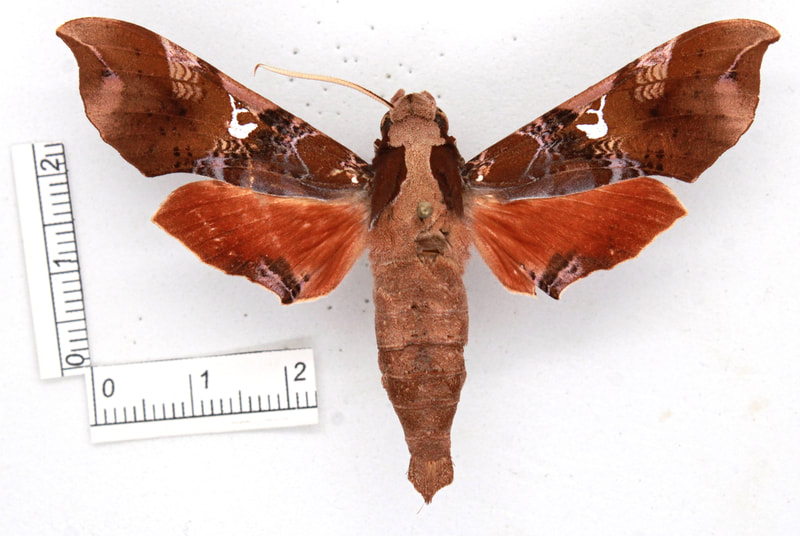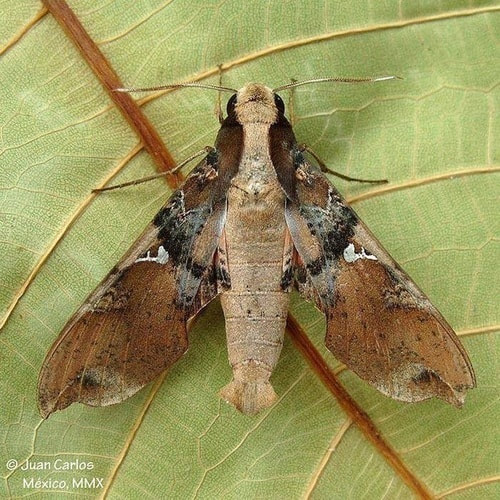|
Common Name: Falcate Sphinx
Ecology and Life History: This moth is active throughout the year in Central and South America, and likely would be in South Florida as well. It is unclear whether or not this species is a resident in Florida, though evidence and multiple collections seem to indicate that it is (2). This species is attracted to light. Bait is an ineffective method of collecting this species. This species is not sexually dimorphic, though females are larger and have more rounded abdomens than males. Eggs are laid on the leaves of hostplant. Caterpillars likely feed on the undersides of leaves. Habitat and Searching for Larvae: This species has scant information available about its larval habits. Larvae feed on Stemmadenia obovata and other members of the Apocynaceae. Larvae are likely to be found virtually anywhere on the plant. This is a species of tropical hammocks in Florida, where it may breed. It is a stray elsewhere. If it is a breeding resident, larvae could likely be found year-round in South Florida. This species almost certainly fluoresces under UV light, though it has yet to be proven. Rearing Notes: {COMING SOON} Host plants: Click here to load this Caspio Cloud Database
Cloud Database by Caspio |
Adult Description: This is a medium sized moth with forewings measuring 58-80mm in length. The forewings are brown in color, with a large, silver discal spot. There are other maculations in the medial area including black dots, bluish basal coloration, and white medial lines. This species can only be confused with Callionima parce. The biggest difference is the apex of the wings, in this species, the apex is falcate, and there is no color difference on either side of the line that bisects the apex.
Larval Description: The larva is green and lacks maculation. The head is also green, flattened, with a white streak on either side. On the thoracic segments, this white line becomes yellow and bordered with black. The parallel black lines continue, faintly, down the dorsal region on the caterpillar, ending at the caudal horn. The caudal horn is green with a blue base and yellowish tip, and angles downward. |
The gallery to the left contains photos of Callionima falcifera adults. If you have a photo that you would like to submit to us, please contact us.
The gallery to the right contains photos of Callionima falcifera larval and pupal stages. If you have a photo that you would like to submit to us, please contact us.
The gallery to the right contains photos of Callionima falcifera larval and pupal stages. If you have a photo that you would like to submit to us, please contact us.








